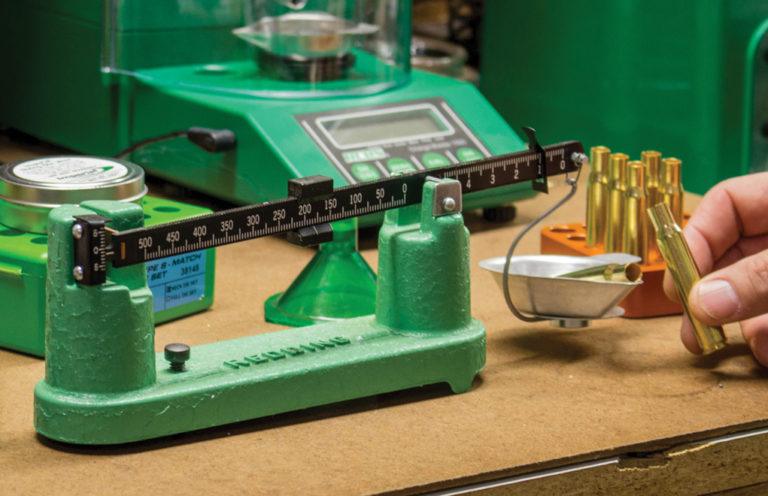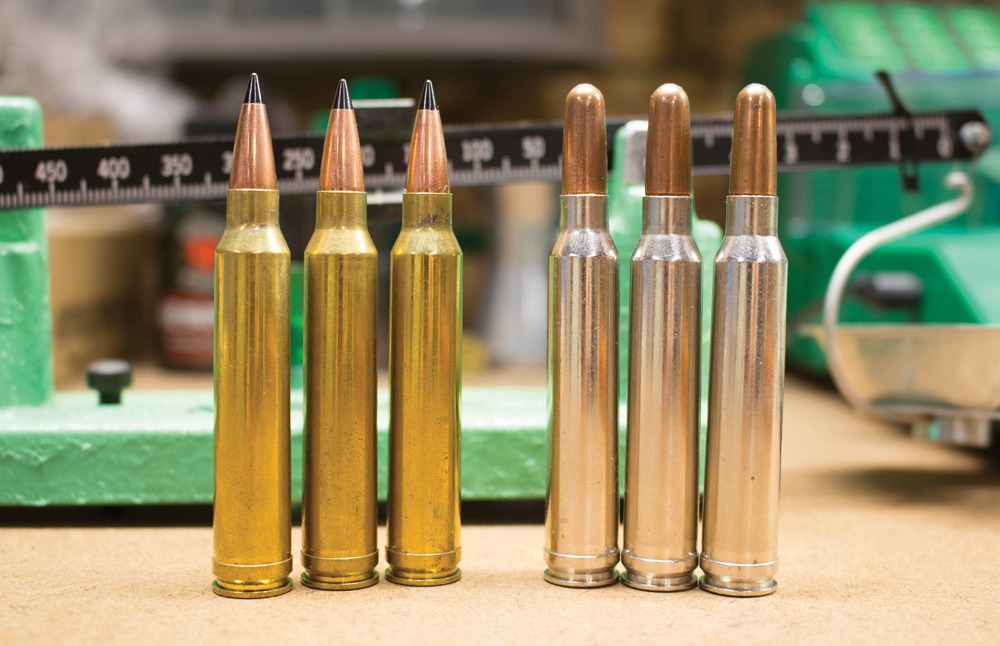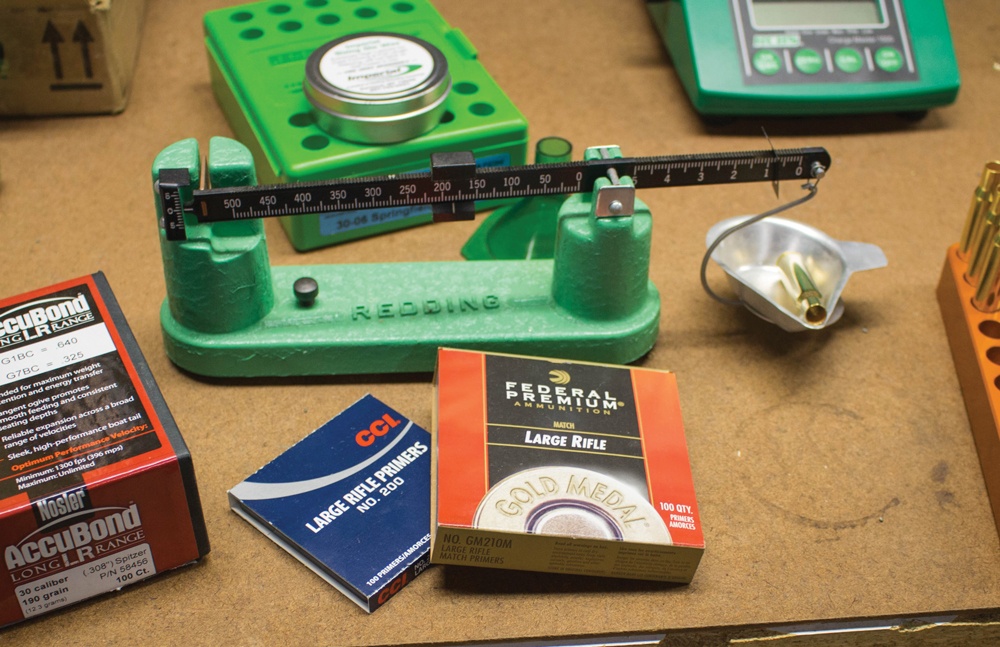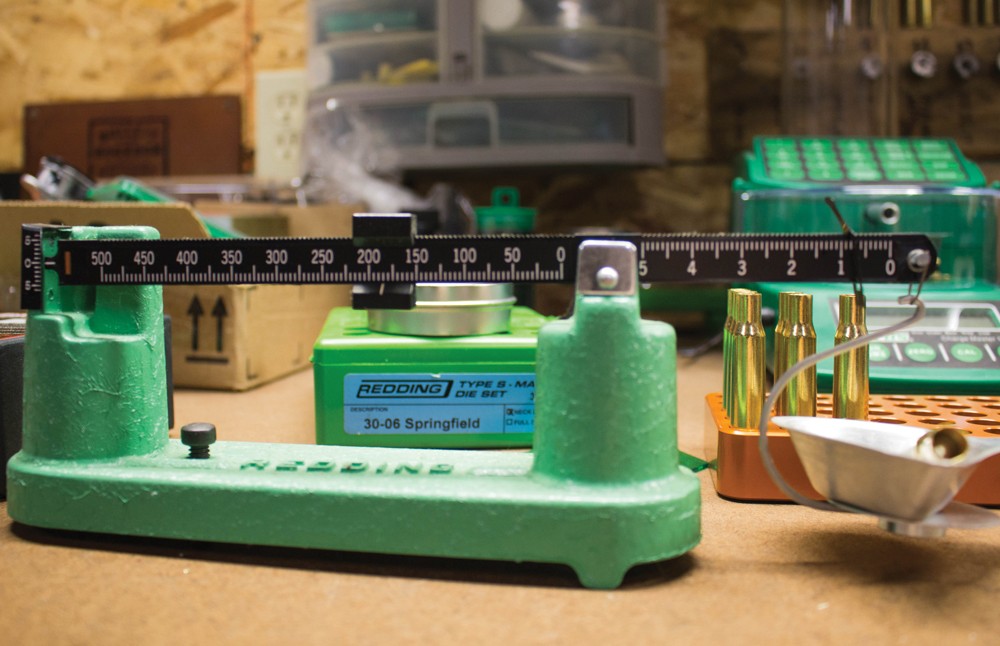
Learn to sweat the small stuff when reloading ammunition and you’ll be rewarded with improved accuracy.
The ammunition component differences to consider:
A handloader’s recipes are usually the result of hours of toil, hard work and experimentation. Some are closely guarded, as if they were an alchemist’s formula, while others are freely shared — and some consider their recipes to be the final word on a particular cartridge/bullet combination. They are — more often than not — just a snapshot, being applicable to a particular rifle and/or barrel. Just as factory-loaded ammunition might give stellar performance in one rifle yet give the owner of another rifle fits of rage, a handload recipe is not universal to all rifles.

I’ve stumbled upon a few loads that have worked very well in a number of different rifles, but there are always one or two guns that simply don’t like that load. There’s nothing wrong with the load … it’s just that the combination of components don’t agree with a particular barrel. Hey, some folks love seafood, but it simply doesn’t agree with my digestive track — that doesn’t make seafood bad, it just makes for a disagreeable combination.
Even our reloading manuals are simply a report on the findings for a particular barrel used in the testing, which is why the data needs to be interpreted with a grain of salt and taken in context. Barrel length, land/groove dimensions and all those subtle little variations can play a big part in speed, accuracy and consistency, all of which make or break a recipe. And, should you change any of the components of the recipe, you might quickly find yourself back at the drawing board.
Variances In Bullet Profiles

You might look at the load data for the .30-06 Springfield within one of the major manufacturer’s manuals and see all of the 180-grain bullets lumped into one category, with — what seems to be — definitive load data for them all. But, included in the mix, might be a 180-grain round-nose flat-base bullet and a sleek spitzer boat-tail. It’s easy to see that the two bullets have different bearing surfaces and will most definitely generate different pressures. So, when changing bullet profiles — not bullet weights — it makes perfect sense to expect a change in performance. It might require starting from the beginning, redeveloping the load for the new bullet.
Primer Particulars
The same can be said for primers. I clearly remember the hunt for components just 5 years ago, when factory ammo was virtually nonexistent and even reloading supplies were a rarity. You bought any suitable primers you could find and worried about the rest later. I found, while having to substitute one brand for another, that there were radical differences in the load performance even within the same designation. I’m not talking about using a magnum primer where my recipe called for a standard, just switching primer brands. I’m talking about a huge shift in velocity, enough to change the point of impact as much a 5-6 inches, or to put the muzzle velocity figures all over the map.

So, keep in mind that the brand of primer can and will drastically alter your handload, and once you obtain the results you want, you’ll need to keep a fair amount of that particular primer on hand. If you’re forced to change primer brands, once again you’ll have to start the load development over.
Case Consistencies

The brand and type of case can also have a big impact on your loads. I once decided to switch to nickel-plated cases in my .300 Win. Mag., and I thought I’d bumped the riflescope because the point of impact changed 4 inches up and to the right when I changed from traditional brass cases. I left my previous load in the brass cases and used the nickel cases for a different bullet.
Wall thickness can also play a major part in the consistency of your loads, and mixing brands can easily bring the issue to bear. It doesn’t seem to be nearly as bad in the lower pressure cartridges, but it will rear its ugly head in the magnums rather quickly. Again, I do my best to keep things consistent by separating the cases into lots if using fired cases, and by choosing one particular brand. I love Norma brass for its consistency, and Lapua brass is also excellent if you’re after the best results. I’ve had some stellar results from good old Remington, Winchester and Federal brass, as well as Hornady and Nosler, but I’ve had some hellish experiences trying to mix and match case brands. I know guys who will actually weigh out cases to get the most consistent results from their loads.
Powder Parallels

Obviously, we weigh our powder charges, but even the same brand of powder can show variations in performance. I know the guys from Norma Precision, who handload all the ammunition for their African PH line, will test the lots of powder they use to verify that the performance is uber-consistent, and they will make variations in the load to ensure their velocities maintain the level required for proper regulation in the double rifles.
Sometimes, when you reach for a new pound of your favorite powder, you might find a slight change in the group size. This seems to have been minimized in the modern powder developments, but it’s a phenomenon that I’ve seen before. The variations may be slight, but it certainly can happen.
Bullet Balance
Bullets can also bring some variations into the mix. If you want to get really geeky, weigh out your bullets on a good scale and you’ll see how much they vary. When we’re loading for long-range precision, we’ll separate the bullets into lots to the nearest half-grain, and it has improved group sizes. Some brands are more consistent than others, and you might end up with more piles than you expected, but it will help in the accuracy department. It really doesn’t matter if the bullet varies from the advertised weight — a 179.0-grain bullet will work just as well as a 180.0 grainer— just so long as it’s consistent.
We put forth all sorts of effort in preparing our cases and in our loading techniques, and we should exercise the same caution when gathering components. Start with the best, keep it as consistent as you can, and you’ll have the success you’re after.
Editor's Note: This article originally appeared in the June 2018 issue of Gun Digest the Magazine.

Next Step: Get your FREE Printable Target Pack
Enhance your shooting precision with our 62 MOA Targets, perfect for rifles and handguns. Crafted in collaboration with Storm Tactical for accuracy and versatility.
Subscribe to the Gun Digest email newsletter and get your downloadable target pack sent straight to your inbox. Stay updated with the latest firearms info in the industry.

![Best Concealed Carry Guns In 2025 [Field Tested] Wilson Combat EDC X9S 1](https://gundigest.com/wp-content/uploads/Wilson-Combat-EDC-X9S-1-324x160.jpg)


![Best 9mm Carbine: Affordable PCCs [Tested] Ruger Carbine Shooting](https://gundigest.com/wp-content/uploads/Ruger-Carbine-Shooting-100x70.jpg)
![Best AR-15: Top Options Available Today [Field Tested] Harrington and Richardson PSA XM177E2 feature](https://gundigest.com/wp-content/uploads/Harrington-and-Richardson-PSA-XM177E2-feature-100x70.jpg)
